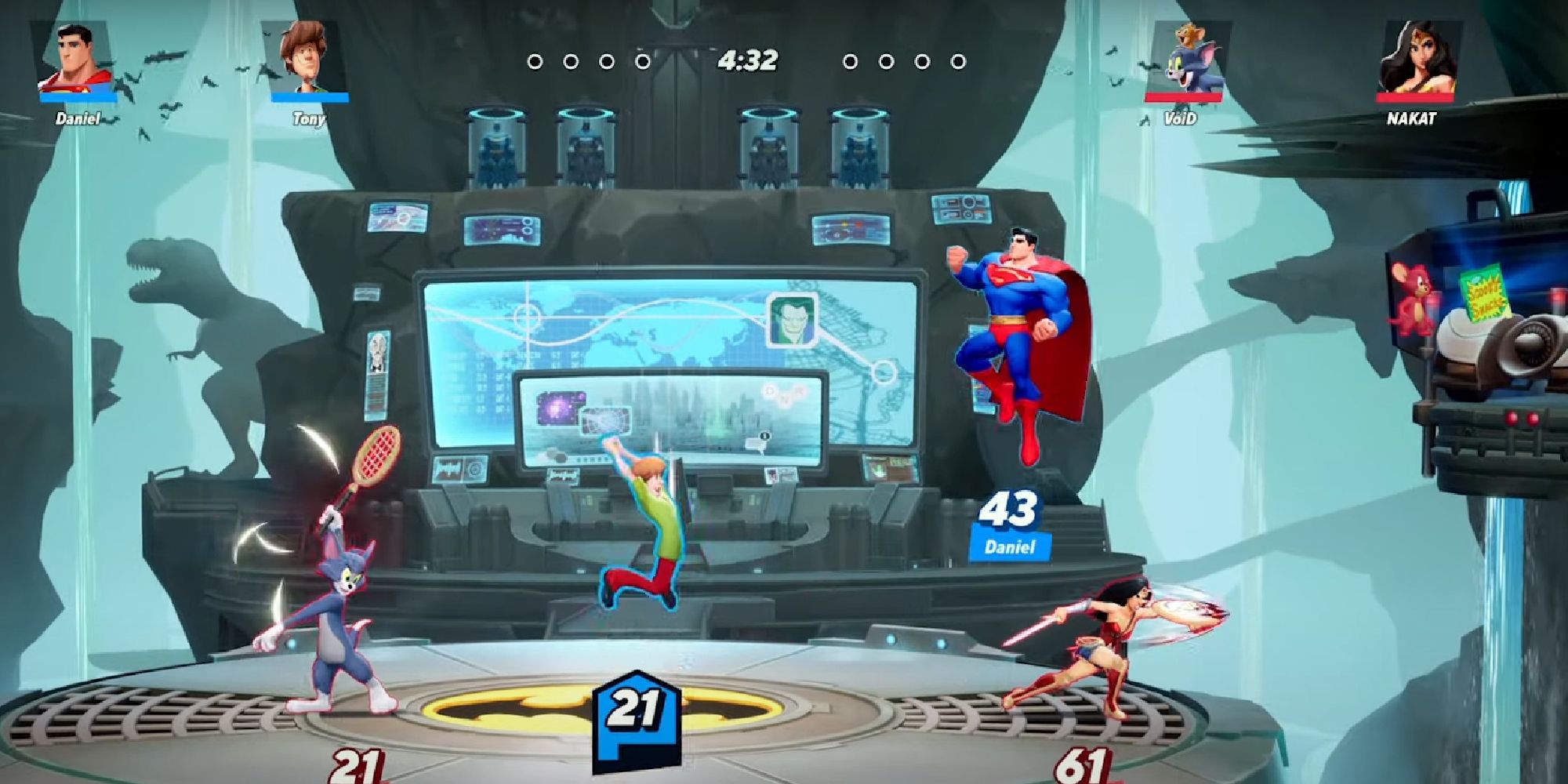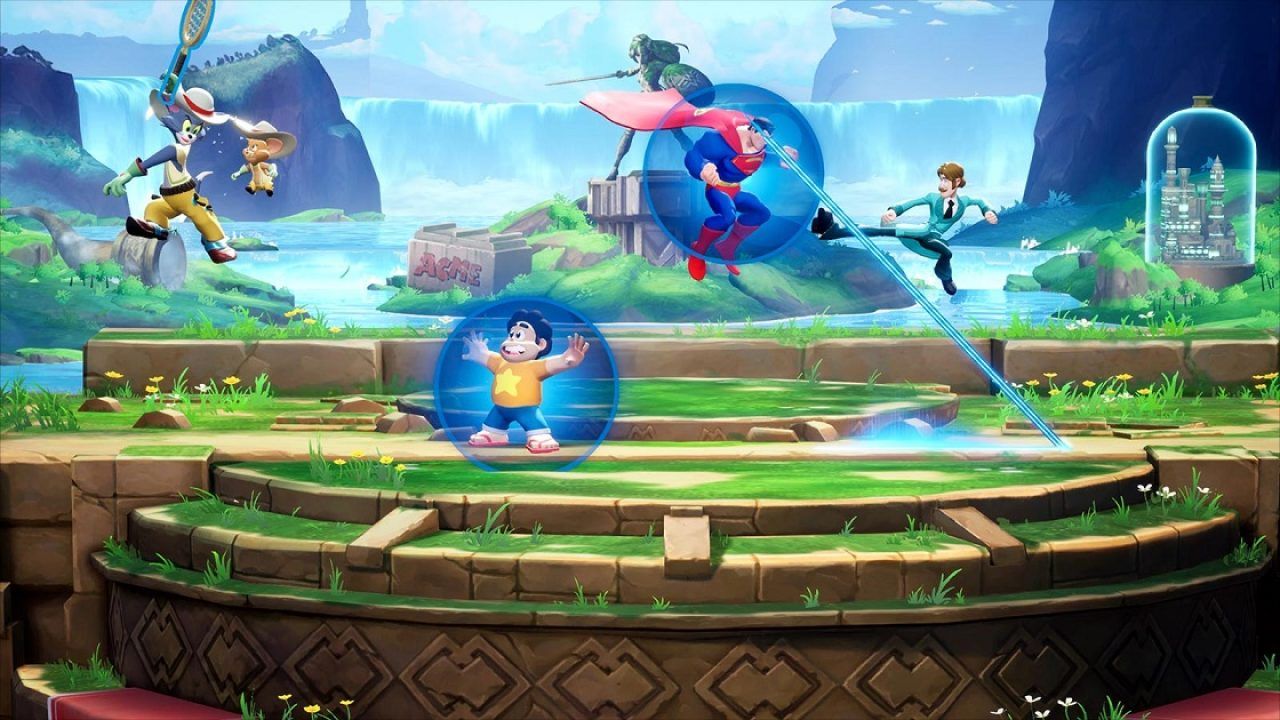I’ve been wanting to get my hands on MultiVersus ever since it first leaked. Not because I’m a sucker for IP (although I am), but because I’ve always wanted a platform fighter with a big budget and tons of loveable characters that isn’t hampered by an awful online service nor tied to just one console. No disrespect to Smash, the OG, but trying to use its online mode is like slamming your fingers in a car door. The fact that this game also has Tom and Jerry kicking the snot out of Superman is just a bonus.
One of the big wins right out of the gate for MultiVersus is its presentation. Not only do all of the characters look great and have tons of vibrant animations that showcase their personalities and reference where they come from, but almost all of them (sorry Steven Universe fans) are voiced by their original actors. I used to think that licensed platform fighters didn’t need voices to make their characters feel real, but MultiVersus has convinced me otherwise.
In fact, that attention to detail is arguably one of MultiVersus’ biggest strengths. Each character has a ton of voice lines and moves that reference their own shows. NetherRealm does this well with Mortal Kombat and Injustice, but Multiversus dials up the fan service to11 and takes things to some really weird and wonderful places. You haven’t lived until you’ve heard Bugs Bunny chastise Arya Stark for wearing fur or having Batman call himself badass after a victory.
None of that world-hopping goodness would mean much if MultiVersus wasn’t fun to play, but thankfully it is. Although the obvious comparison right out the gate is Smash, MultiVersus couldn’t be further from Nintendo’s formula. While they share the platform fighter genre, MultiVersus sets itself apart in several key ways. It has a much bigger focus on team fights and cooperative play, with each fighter having at least one move that works better in tandem with another player.
In team battles, Batman can use his grappling hook to attach to teammates and quickly get to where they are. Meanwhile, Wonder Woman can activate a shield buff and quick dash to her teammate’s location. All of those co-op enhanced moves also have utility in one-on-one fights. Batman’s grappling hook can be used to attack enemies, and Wonder Woman’s shield can buff herself. MultiVersus is entirely playable with just one player, but it certainly feels made for long two-player game nights.
Another key difference is the physics system and game feel. Every character on the roster is much floatier and air-bound than Smash fighters, making aerial combat feel like the focus. Characters have so much aerial movement that vertical recovery is almost a non-issue and it instead becomes about simply staying alive and not getting to percentages that’ll send you flying out of the arena.
Brawhalla may be a better point of comparison than Smash, with no shield button, no grab, and a ton of control when your feet are off the ground. Its use of smash-like attacks and lack of a weapon system means it’s a good middle ground between Brawlhalla and Smash, but it succeeds in finding its own identity.
Although the cooperative focus and floatier feeling work for MultiVersus, there are a few things that it introduces that get in its own way. There are far too many status effects going on at once, with characters constantly getting set on fire or becoming enraged. It makes characters feel distinct from one another, but it also crowds the screen and means that newcomers are going to have a lot more questions than they would with other platform fighters.
The perk system is also a little concerning currently. Each character can equip up to four perks with different stat bonuses and it feels like a hat on top of a hat. It’s really not necessary here and I hope that there’s either an option to turn it off or some kind of skip button so I don’t have to think about it again.
As you’d hope from a game based on a multiversal IP crossover, by far the biggest strength of MultiVersus is its roster. From obvious picks to Batman, Wonder Woman, and Superman, to weirder choices like Velma, Finn, and a Shaggy that’s based on internet memes, there’s something for everyone here. They all manage to feel distinct from one another and bring something new to the table. The roster is set to grow even more as time goes on and it’s exciting to imagine the possibilities, seeing how well the starting crew has been handled. I was particularly attached to Bugs and Steven, both of whom felt pretty complex and full of tricks.
My key concern for MultiVersus is something that can’t really be measured with this beta – monetization and progress. There’s no indication of how much the battle pass is going to be, how frequently they’ll be released, or what kind of in-game store is going to be present, and I’m already assuming the worst. I’m hoping it feels worthwhile without being too expensive, but we’ve seen how similar free-to-play platform fighters like to gouge their customers. Hey Brawlhalla, ten quid per Ninja Turtle is a rip-off and you know it.
Currently, progression feels really solid and free of too much grinding. Even though daily challenges that progress the battle pass eventually get cut off, fighters level up at a pretty good pace without any kind of purchased XP boost. I’m sure those will be sold, but you seem to be able to make a ton of progress without putting any money in. I managed to get to level 35 of the 50 level battle pass in roughly six hours, although that could just be a feature of the beta.
Despite some minor issues with overcomplication, as well as a progression system that remains a mystery, MultiVersus is everything I wanted it to be and more. It has great platform fighting that feels distinct from the rest of the competition, and an exciting cast clearly made with love and care. It’s a real treat for fans of the various IPs that are represented and the genre as a whole – Space Jam 2 this ain’t.
Source: Read Full Article
.png)

